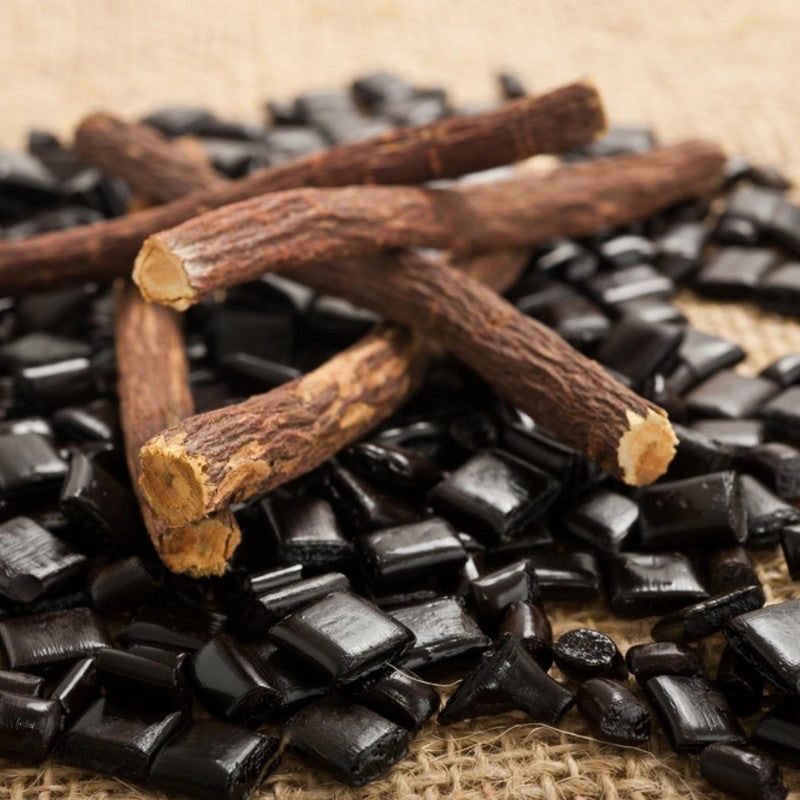
The History of Licorice for Digestion
Share
The History of Licorice for Digestion*
Licorice has roots in herbalism dating back to the beginning of recorded human history. Ancient cultures in Assyria, Egypt, China and India used this herb for a variety of reasons. Over the centuries, licorice (Glycyrrihiza glabra) became a go-to digestive tonic, due to its ability to support the gut lining.*
Today, we know that the best form of licorice is DGL, or deglycyrrhizinated licorice, which helps protect the mucosal lining in the gut and rebuild injured tissues.* It also soothes the digestive system and helps calm occasional heartburn.* (That’s the form you’ll find in our DGL Gummies, which are the first of their kind!)
Keep reading to learn more about this sweet herb and its rich history.
Long-ago licorice uses
The ancient Greeks frequently documented their affinity for licorice. In fact, its genus name comes from two Greek words meaning “sweet” and “root,” glykos and rhiza. The name is fitting, since licorice was (and still is) commonly used in sweets in place of sugar. Licorice contains a component called glycyrrhizin, which is 50 times sweeter than cane sugar (sucrose). The sweetness in licorice takes longer to develop than sugar but it lingers.
You’ll find Licorice mentioned in every major European herbal text, dating back to the first century AD. Traditional Chinese Medicine and Ayurveda consider it to be a first-class herb and tonic.* All of these traditional herbal systems noted licorice’s use for the digestive system.* In particular, licorice was used to calm and soothe occasional heartburn, while strengthening and protecting the mucosal lining of the digestive tract.* Since then, licorice has been known around the world as an effective digestive tonic.*
Modern uses
Fast-forward to the 20th century, and this old favorite got a second life. In 1946, a Dutch physician named F.E. Revers published his research on “licorice juice” for digestive relief and repair.* While the juice worked well, he wanted to eliminate the side effects of using the whole root. Those side effects are linked to glycyrrhizin, the naturally occurring compound responsible for licorice root’s sweetness.* Six years later, he experimented with removing the naturally occurring glycyrrhizic acid (glycyrrhizin) – and it worked. Over the decades, the process of creating DGL has improved, making this time-tested herb into a trusted stomach soother.*
Why DGL?
Removing glycyrrhizin from licorice root allows for appropriate dosing for digestive support.* Deglycyrrhizinated licorice, or DGL, is the form preferred for its safety and efficacy.
DGL provides soothing, calming support for occasional heartburn and works differently than other supplements.* Since chewing activates DGL, our smooth German Chocolate gummies are the ideal format for maximum effectiveness. Each two-gummy serving contains 200mg DGL in a 10:1 extraction. Learn more.

